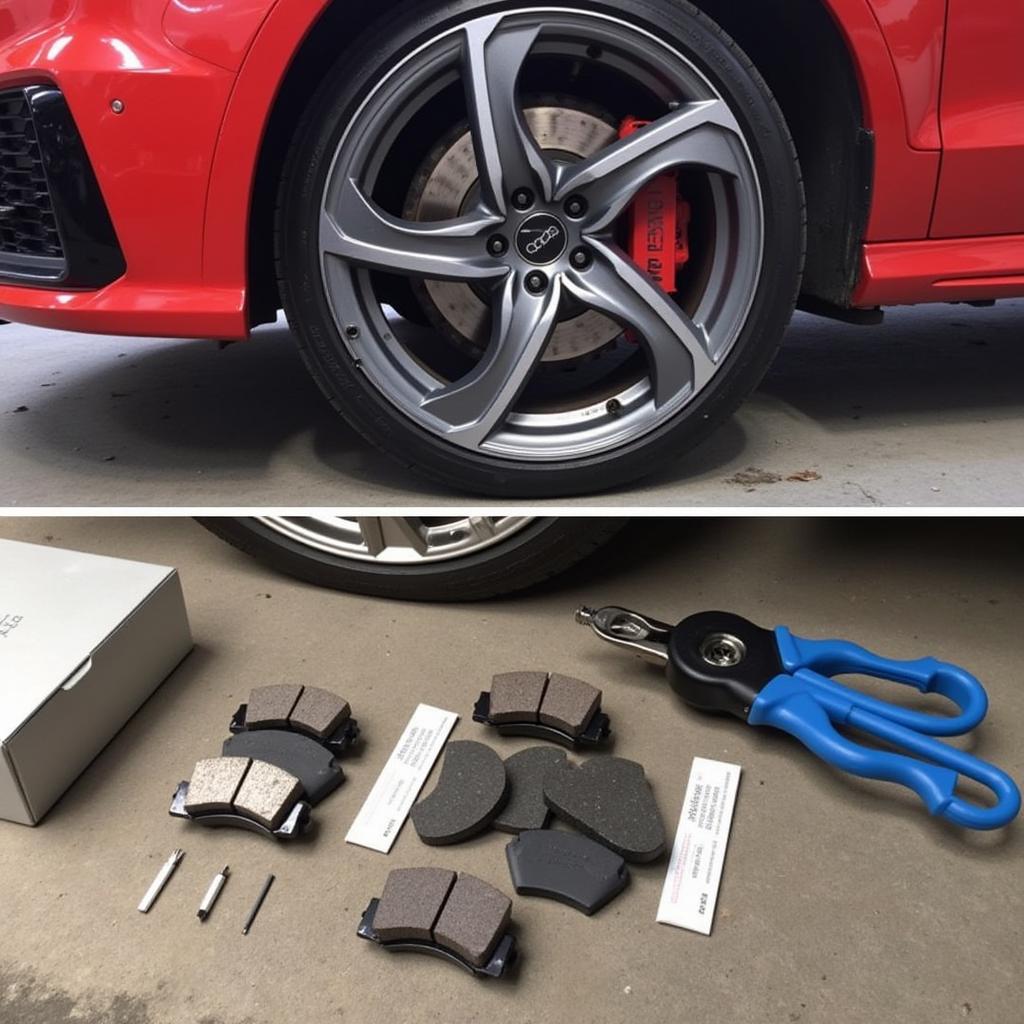The “Brake Pad Wear” warning on your Mercedes-Benz W163, especially during rainy days, can be a stressful situation. It’s important to understand the root cause of this false alarm before you panic and rush to replace your brake pads.
Understanding the Problem: Why False Brake Pad Warnings?
The W163 is known for its electronic stability program (ESP) which plays a crucial role in maintaining control during challenging driving conditions. However, the ESP system might misinterpret the information it receives from the sensors, leading to a false brake pad wear warning, particularly when the roads are wet. This is because the ESP system is using various inputs from the sensors, including the brake pad wear sensor, to assess the vehicle’s stability.
Let’s break down the potential culprits behind the W163’s false brake pad warning on a rainy day:
Common Causes of False Brake Pad Warning in W163
1. Moisture and Corrosion:
- Wet Weather Conditions: Rain and humidity can cause moisture to accumulate in the brake system, particularly on the brake pad wear sensor. This moisture can disrupt the sensor’s signal transmission, causing a false warning.
- Corrosion: Over time, corrosion can form on the brake pad wear sensor, affecting its functionality and causing intermittent or false readings.
2. Sensor Malfunction:
- Sensor Failure: The brake pad wear sensor itself can malfunction, leading to inaccurate readings. This could be due to a faulty connection, a broken wire, or an internal component failure.
- Incorrect Sensor Installation: If the sensor was improperly installed during a previous brake job, it might not be properly aligned, resulting in a false warning.
3. Other Factors:
- Dirty Brake Discs: Dirty brake discs can create friction and heat, causing the ESP system to misinterpret the brake pad wear data.
- Worn Suspension Components: Worn suspension components can affect the vehicle’s stability and trigger a false brake pad warning.
- Low Brake Fluid Level: A low brake fluid level can indicate a leak or a problem in the brake system.
Expert Insights from Thomas Miller, a veteran automotive technician:
“It’s crucial to diagnose the issue correctly. A false brake pad warning might not mean the brake pads are worn out. The sensor could be the problem.”
“Don’t rush to replace your brake pads until you understand the cause of the warning. Sometimes, a simple cleaning or sensor adjustment is enough.”
Troubleshooting the False Warning:
1. Inspect the Brake System:
- Visual Inspection: Visually inspect your brake pads for wear and tear. If they are still in good condition, the warning is likely false.
- Sensor Inspection: Check the brake pad wear sensor for any signs of corrosion, damage, or loose connections.
2. Cleaning the Brake System:
- Clean the Sensors: Clean the brake pad wear sensors using a wire brush or compressed air to remove any accumulated dirt or moisture.
- Clean the Brake Discs: Clean the brake discs to remove any debris or rust.
3. Reset the Warning:
- Using Diagnostic Tool: You can reset the warning light by using a diagnostic tool to clear the fault code related to the brake pad wear sensor.
- Disconnecting the Battery: Disconnecting the battery for several minutes can also help reset the warning light.
4. Sensor Replacement (if Necessary):
- Diagnostic Confirmation: If you’ve checked and cleaned the sensor but the warning persists, you might need to replace the brake pad wear sensor.
- Professional Installation: It’s recommended to have a qualified mechanic replace the sensor to ensure proper installation.
5. Address Other Potential Issues:
- Brake Fluid Level: Check and top off the brake fluid level if it is low.
- Suspension Components: Inspect the suspension components for wear and tear.
FAQs:
Q: How do I know if the brake pad warning is real or false?
A: If you visually inspect the brake pads and they are still in good condition, the warning is likely false.
Q: Can I drive with a false brake pad warning?
A: Yes, you can drive with a false warning, but it’s important to address the underlying issue to prevent potential problems.
Q: Should I replace the brake pads regardless of the warning?
A: No, only replace the brake pads if they are actually worn out. Don’t automatically replace them just because of a false warning.
Q: Is it safe to drive on a rainy day with a false brake pad warning?
A: Generally, it’s safe to drive with a false warning, but it’s recommended to address the issue as soon as possible.
Q: Should I take my W163 to a dealer or a mechanic for the issue?
A: You can take your W163 to a qualified mechanic or an authorized Mercedes-Benz dealer.
Remember: It’s crucial to accurately diagnose the problem before making any costly repairs. By following the troubleshooting steps outlined above, you can determine the source of the W163’s false brake pad warning and address it efficiently.

